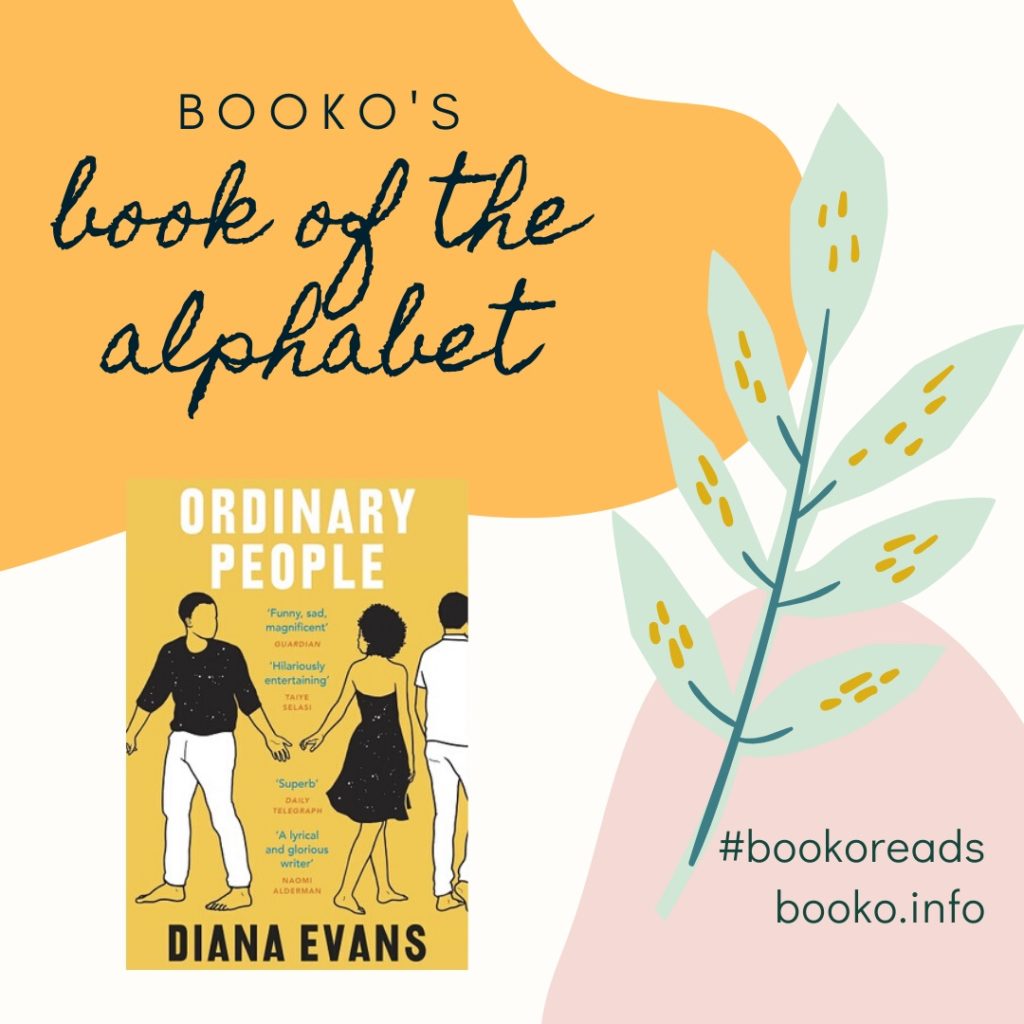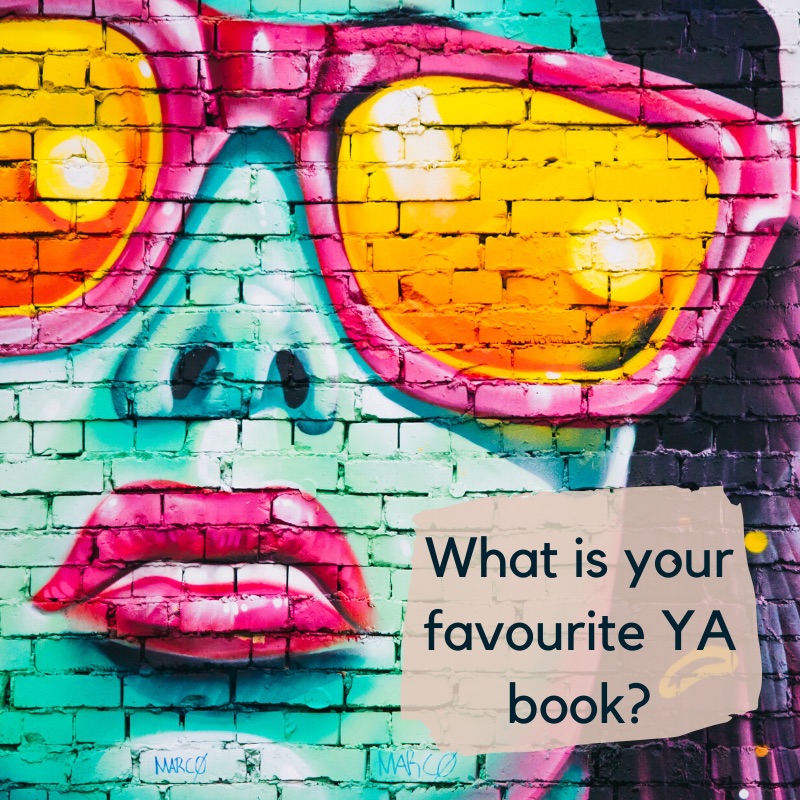Ordinary People is today’s Book of the Alphabet. It’s an intimate study of identity, parenthood and the fragile architecture of love.
What’s your favourite book beginning with O?

Ordinary People is today’s Book of the Alphabet. It’s an intimate study of identity, parenthood and the fragile architecture of love.
What’s your favourite book beginning with O?

Today’s Book of the Alphabet is N and we’ve chosen Sally Rooney’s Normal People – it was in nearly every book club we saw last year.
What’s your favourite book beginning with N?

Today’s Book of the Alphabet is M and we have a whopper for you! Rachel Kushner’s The Mars Room is haunting and beautifully written.
What’s your favourite book beginning with M?

The Young Adult genre has grown massively over the past few years. We’ll be sharing some of the newest on the blog on Thursday. What’s your favourite YA book?

Today’s Book of the Alphabet is Kindred by Kirli Saunders. Kirli has a keen eye for observation, humour and big themes.
What’s your favourite book beginning with K?

We’re exploring the genre of crime this week on the blog and boy do we have some great titles to share. Be sure to check back on Thursday for the best books!
For today, we have this little reminder by the wonderful Madame Christie.

Ugh. There is nothing worse than staring at a blank screen (or piece of paper if you’re old school) and willing inspiration to hit. Earlier this week we asked for your top tips for getting through the dreaded writers block, be sure to jump onto instagram and facebook to join in the conversation.
Copywriting is a tricky game. Sometimes we can sit and write with ease but when we reread it, it fails to excite or inspire us. We have so been there but luckily have found a handful of books that are amazing. These little gems will help you shape your copy to really connect with your audience, and also offer tips and tricks to get you started.
So sit back, have a read with a cup of tea and prepare to be inspired.
Eats, Shoots & Leaves by Lynne Truss
This is an oldie but a goodie. When Lynne Truss wrote her “small book on punctuation”, she had no idea that it would become a bestseller that reinvigorates interest in the niceties of the English language. Eats, Shoots & Leaves is more than a guide to punctuation use, it is also a lament and a call-to-arms. Through amusing anecdotes drawn from history, literature, and real signage, Lynne Truss discusses the origin and history of different punctuations and how they should be used. Eats, Shoots & Leaves manages to be witty, informative and compulsively readable, because it shows that misplaced or absent punctuation can change the meaning of sentences in dramatic and funny ways.
Copywrong to Copywriter by Tait Ischia
This beautifully designed book is a little gem. It’s packed from cover to cover with tips for writing clearly, with the perfect tone and with strategic purpose. It’s a great tool for small business owners, copywriters and design studios. If you’re planning a career as a copywriter, it’ll help you to explain the basic concepts to your clients. Discover how to make words work in your favour while learning the fundamentals to write your own copy. Reading, and digesting, this book will increase your knowledge, skill and confidence.
Persuasive Copywriting by Andy Maslen
With the majority of creative professionals developing their skills on the job, it is notoriously difficult to benchmark successful copy. This book provides a step up for those who already know the basics, and are seeking more advanced, psychology-driven techniques to gain the competitive edge. With practical insight into human decision making and consumer engagement, it inspires the clear-cut confidence needed to create, quantify and sell stand out copy in a cluttered marketplace.
This second edition of Persuasive Copywriting complements the “how to” perspective of copywriting, with impressive interviews from leading ad agencies and copywriters across the globe, addressing day to day issues faced in a multitude of roles. Updates include practical advice to measure and benchmark effective copy, guidance on creating and critiquing briefs, plus four new chapters on how to weave copywriting skills into the wider industry. These cover particularly useful ground around storytelling, content marketing and the impact of evolving channels like mobile and social media. Practical and inspiring, it is a vibrant, all-encompassing guide to copywriting; an essential for your bookshelf.
The Copy Book by D&AD
In 1995, the D&AD published a book on the art of writing for advertising. The then best-selling book remains an important reference work today -a bible for creative directors. D&AD and TASCHEN have joined forces to bring you an updated and redesigned edition of the publication. Regarded as the most challenging field in advertising, copywriting is usually left to the most talented professionals, often agency leaders or owners themselves. The book features a work selection and essays by 53 leading professionals in the world, including copywriting superstars such as David Abbott, Lionel Hunt, Steve Hayden, Dan Wieden, Neil French, Mike Lescarbeau, Adrian Holmes, and Barbara Nokes. The lessons to be learned on these pages will help you create clearer and more persuasive arguments, whether you are writing an inspiring speech, an engaging web banner or a persuasive letter. This is not simply a “must-have” book for people in advertising and marketing, it is also a “should-have” for anyone who needs to involve or influence people, by webpage, on paper, or in person.
The Mom Test by Rob Fitzpatrick
*Technically* this isn’t a book on copywriting but is a great book on having conversations with your customers so we just had to include it. The Mom Test is a quick, practical guide that will save you time, money, and heartbreak. They say you shouldn’t ask your mum whether your business is a good idea, because she loves you and will lie to you. This is technically true, but it misses the point. You shouldn’t ask anyone if your business is a good idea. It’s a bad question and everyone will lie to you at least a little . As a matter of fact, it’s not their responsibility to tell you the truth. It’s your responsibility to find it and it’s worth doing right. Talking to customers is one of the foundational skills of both Customer Development and Lean Startup. We all know we’re supposed to do it, but nobody seems willing to admit that it’s easy to screw up and hard to do right. This book is going to show you how customer conversations go wrong and how you can do better.
Draft No. 4 by John McPhee
Draft No. 4 is a master class on the writer’s craft. In a series of playful, expertly wrought essays, John McPhee shares insights he has gathered over his career and has refined while teaching at Princeton University, where he has nurtured some of the most esteemed writers of recent decades. McPhee offers definitive guidance in the decisions regarding arrangement, diction, and tone that shape nonfiction pieces, and he presents extracts from his work, subjecting them to wry scrutiny. In one essay, he considers the delicate art of getting sources to tell you what they might not otherwise reveal. In another, he discusses how to use flashback to place a bear encounter in a travel narrative while observing that “readers are not supposed to notice the structure. It is meant to be about as visible as someone’s bones.” The result is a vivid depiction of the writing process, from reporting to drafting to revising―and revising, and revising.
Draft No. 4 is enriched by multiple diagrams and by personal anecdotes and charming reflections on the life of a writer. McPhee describes his enduring relationships with The New Yorker and Farrar, Straus and Giroux, and recalls his early years at Time magazine. Throughout, Draft No. 4 is enlivened by his keen sense of writing as a way of being in the world.
Enjoy!
There is NOTHING worse than staring at a blank page (or screen) waiting for inspiration to magically appear. When this happens we like to put on a podcast and go for a walk in the fresh air.
How about you? What do you do to get you through the dreaded writers block?

It’s Word Nerd Day!
Ever wondered who actually decides which words make it into the dictionary? Language historian Anne Curzan gives a charming look at the humans behind dictionaries, and the choices they make.
Andrew Fitzgerald shares the fascinating history of new forms of creative experimentation of storytelling from radio through to twitter.